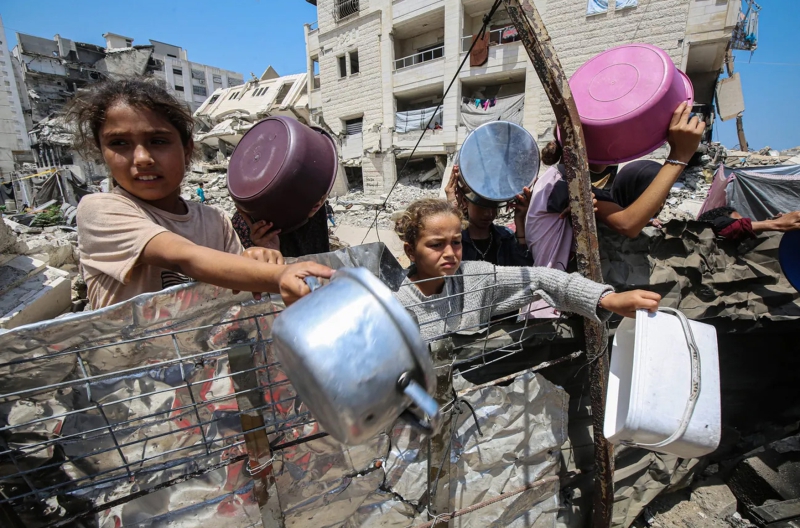At the end of May, the Gaza Humanitarian Foundation — a centralized body for distributing aid — began operations in the Gaza Strip. But its first days were marked by deadly incidents. People seeking help came under fire and were attacked, with the death toll reaching into the hundreds. The enclave is experiencing a severe shortage of drinking water, basic food, and medicine. Gaza residents, medical workers, and aid staff spoke to The Insider about how they try to stay safe, find supplies, and carry on under these conditions.
The Gaza Humanitarian Foundation (GHF), a U.S.-Israeli initiative aimed at replacing the UN humanitarian organizations that previously operated in the Strip, launched on May 27. According to Israeli authorities, aid from the UN was effectively falling into the hands of Hamas, enabling the group to manipulate the population via its control over essential supplies.
U.S. Ambassador to Israel Mike Huckabee said the new foundation is funded by several anonymous donors. Officially, GHF stated that its initial $100 million came from an unnamed foreign country. Israeli media, citing sources, reported that the Israeli government later transferred around $300 million to the fund, though this has not been confirmed by the authorities in Jerusalem. On June 26, the U.S. State Department announced that it had approved a $30 million contribution to GHF and urged other countries to follow Washington’s lead.
Even before GHF’s first distribution center opened in Gaza, international organizations voiced concerns about the effectiveness of its aid model. According to The New York Times, citing UN officials, Gaza residents must travel long distances and cross through IDF-controlled areas to reach distribution points — a journey that can be deadly.
To reach the distribution points, Gaza residents must travel long distances and cross IDF-controlled areas
The UN has expressed concerns that Israel may be attempting to concentrate the local population in a few select locations — a move that could be classified as forcible displacement. GHF’s first executive director, Jake Wood, announced his resignation, stating that the foundation's operations were «impossible to carry out while strictly adhering to the principles of humanity, neutrality, and independence.» Wood was replaced by Johnny Moore, an evangelical preacher and former adviser to U.S. President Donald Trump.
At present, four GHF humanitarian aid distribution points are open in Gaza. Three are located in the area of the so-called Morag Line in the southern part of the Strip, and one in the Nitzarim Line area in central Gaza. No distribution points have been opened north of the Nitzarim Line, even though Gaza City, which is located there, may still be home to as many as one million people (according to a spokesperson for the UN Office for the Coordination of Humanitarian Affairs (OCHA), who spoke to The Insider). The GHF distribution centers are guarded by a private American security company.
No distribution points have been opened north of the NitzarimLine, even though the city of Gaza may still be home to up to one million people
The operating hours of the distribution centers change constantly, and at times they close just minutes after opening. Even residents who live close enough to reach them often decline the trip to receive GHF-provided meals — the risk to their lives is simply too high.
“The distribution points open for literally ten minutes, and thousands of starving people rush in. There's not enough for everyone, and then people are driven away with gunfire,” Ilham, a Gaza resident, told The Insider. “Who does the shooting? When my husband and brother were there, the crowd was fired on with a cannon or a tank. Do Hamas or any of the other gangs have tanks or cannons?”
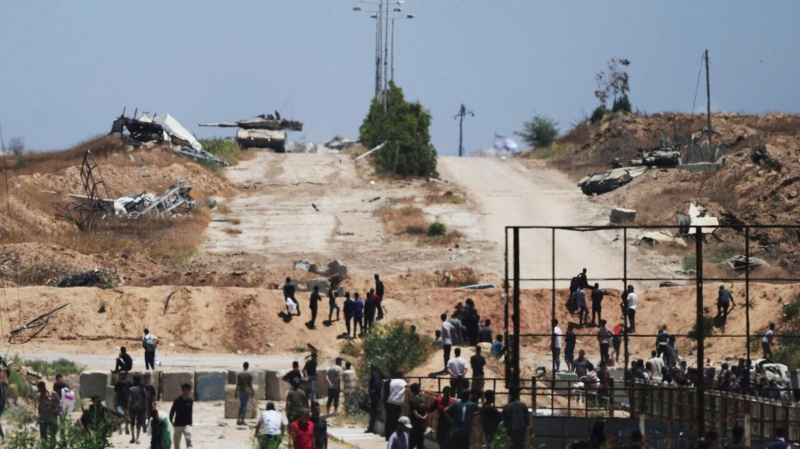
Ilham has to walk five kilometers to reach the distribution point, but the distance is not the main problem. Her husband once tried to collect aid there and barely made it out alive. A few days later, her brother and nephews went to the same spot. That time, the shooting was even closer, forcing them to turn back without receiving any supplies.
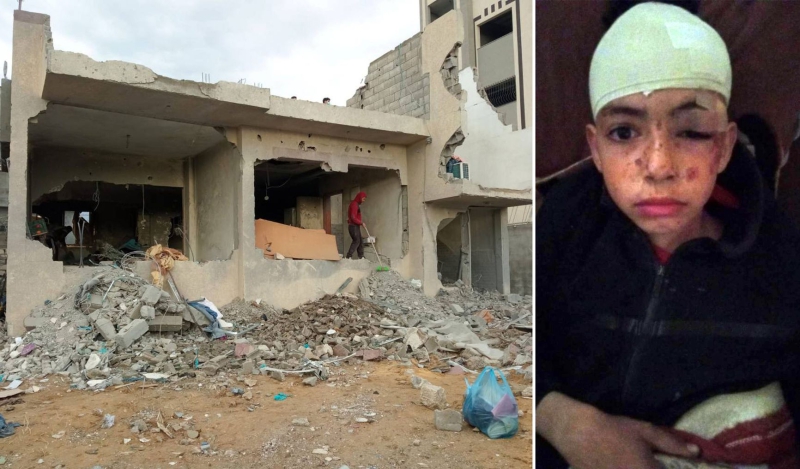
The Red Cross headquarters in Israel told The Insider that since May 27, their field hospital in Rafah has registered 19 mass casualty incidents. In every case, the wounded said they had been injured either near GHF aid centers or on their way to one. A total of 1,900 wounded were brought to the field hospital, and at least 114 of them died. All had suffered gunshot or shrapnel wounds. The Red Cross noted that its hospital receives only a portion of the wounded, while most are taken to Nasser Hospital in Khan Younis.
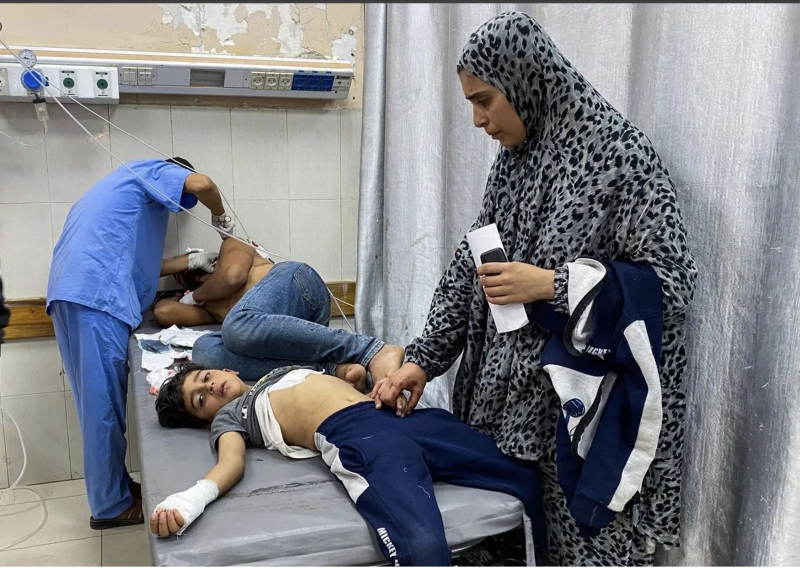
Gunshot victims used to be rare, but their numbers surged at the end of May, said Victoria Rose, a London-based surgeon who until June worked at Nasser Hospital on a humanitarian mission. There were hundreds of such cases, and patients told her they had been shot near aid distribution sites. They say the gunfire came from GHF security personnel.
The Hamas-run Gaza Health Ministry claims that over 500 people have been killed in shootings around GHF distribution centers since May 27. In response, GHF stated that “no incidents or fatalities” had been recorded “in the immediate vicinity” of its aid centers. Yet in a June 27 interview with the BBC, GHF Executive Director Johnny Moore said he had “never denied that people were dying near the aid distribution points.”
The question of who is responsible for the gunfire near aid distribution sites remains the subject of heated debate. The Israeli army controls the perimeter where the GHF distribution points are located. At the same time, Hamas militants have launched multiple attacks on IDF forces in these areas, and several Israeli soldiers have been wounded.
Haaretz journalists interviewed IDF soldiers stationed near the distribution centers. Speaking on condition of anonymity, some said that shooting near the sites may be used for the purposes of crowd control and security. The IDF press office, for its part, stated that “the IDF prohibits attacks on the civilian population.”
An IDF spokesperson’s statement, sent to The Insider, read: “In light of recent reports about harm to civilians in the vicinity of humanitarian aid distribution centers, these incidents are being investigated by the appropriate authorities within the Israel Defense Forces.”
A few days after the Haaretz article was published, the IDF acknowledged that there had been incidents in which civilians in Gaza were killed as a result of “inaccurate and reckless” artillery fire. Earlier, in response to accusations against the army, the IDF released a recording of a conversation with a local resident who claimed that Hamas was responsible for firing on the crowds.
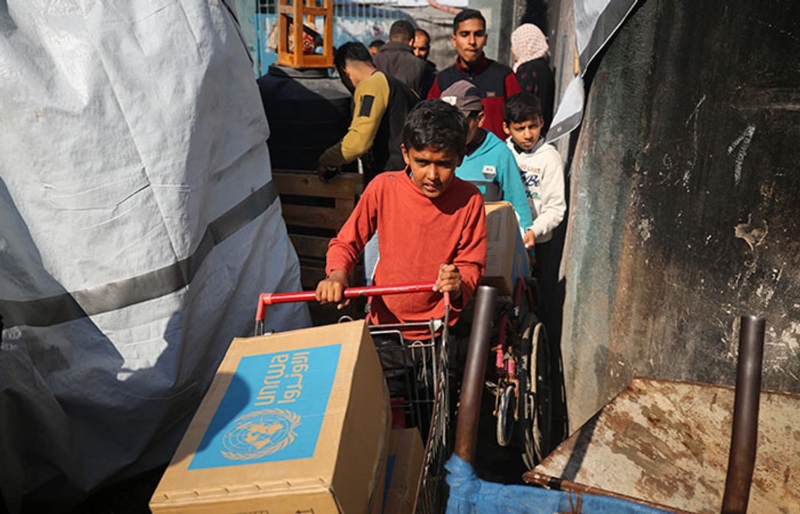
In addition to the IDF and Hamas, Gaza is home to a number of armed groups that have only gained in strength since Hamas began losing ground as a result of the Israelis’ ongoing Gaza offensive, nicknamed Operation Gideon’s Chariots. One of these groups is the militia known as the “Popular Forces,” led by Yasir Abu Shabab. A Bedouin from Rafah, Abu Shabab was involved in drug trafficking before the war and had been imprisoned by Hamas, though he escaped thanks to Israeli airstrikes. The “Popular Forces” number around 400 fighters and operate mainly in the Rafah area.
Former Israeli Defense Minister and leader of the Yisrael Beiteinu party Avigdor Lieberman told journalists that Israel is arming Abu Shabab’s militia. The Prime Minister’s Office did not deny the allegation and issued a statement saying: “Israel is making various efforts to defeat Hamas based on the recommendations of all national security agencies.”
Recently, Abu Shabab claimed that his militia operates under the authority of the Palestinian Authority in Ramallah. He said the group is fighting Hamas and that it is involved in escorting humanitarian convoys. However, in late May, Jonathan Whittall, head of the UN Office for the Coordination of Humanitarian Affairs in Gaza and the West Bank, told The Guardian that criminal groups — including Abu Shabab’s militia — are responsible for looting the aid shipments that previously entered Gaza through the Kerem Shalom crossing.
The “Popular Forces” is the largest such group, but it is far from the only one. According to local residents, a significant share of the humanitarian aid meant for distribution at GHF centers is seized by armed gangs before being sold on the black market.
Ilham says her family hasn't seen vegetables, fruit, or meat in several months. They buy lentils and rice on the black market, cook over an open fire, and eat once a day. “It's not enough — we're constantly hungry, but we simply can't afford more,” she says. The most pressing problem for Gaza’s residents, however, remains the lack of drinking water, which has to be carried in buckets from distant wells.
The shortage of drinking water remains the most urgent problem for Gaza residents
According to Ilham, various groups in the Nuseirat area are trying — with limited success — to maintain order and prevent looting and violence. She’s unsure whether these groups are affiliated with Hamas.
“Hearing your children beg for food every day for months is unbearable. But the aid distribution points are a real-life Hunger Games. Anyone who goes there for food doesn’t know if they’ll come back alive. And yet people are so hungry, they’re genuinely willing to risk their lives for food. It’s hard to grasp what people can be driven to,” Ilham says.
Some areas of Gaza receive no aid at all. North of the Nitzarim Line — that is, in Gaza City, where international organizations estimate that just under a million people are currently living — there are no GHF aid distribution centers. The Office of the Coordinator of Government Activities in the Territories (COGAT) told The Insider that the group no longer oversees humanitarian aid to Gaza. COGAT emphasized that responsibility for these matters now lies with the Israeli Ministry of Defense, the Prime Minister’s Office, and the Foreign Ministry. As of the time of publication, none of those agencies had responded to The Insider’s inquiries.
Every few days, residents of different Gaza City neighborhoods are ordered to leave their homes and move to other parts of the city due to IDF operations in their area. Mohammad (name changed at his request) told The Insider that over the course of the war, he and his family have had to flee and return home at least four times.
The last evacuation order Mohammad received came just a day before our conversation:
“Imagine how it happens. You pack clothes, grab a few books, water canisters. Even if you can carry everything you need, you might have elderly parents or small children, so you need transportation. We don’t have cars. Anything that hasn’t been destroyed by bombs either sits idle because there’s no fuel or has been taken over by armed groups. So you have to find a cart and a donkey. A cart and a donkey cost $200. I don’t have that kind of money right now. And I just don’t have the strength anymore. Especially since we all know the designated evacuation zones are shelled too, and people die there constantly.”
According to Mohammad, his daily routine involves waking up at 5 a.m. and going out in search of plastic — there’s been no gas for a long time, and something is needed to fuel a fire. Most of their furniture has long since been chopped up for firewood. Buying wood at the market is extremely expensive, so they burn plastic. Then, Mohammad says, he drinks tea without sugar and goes to fetch water. He usually waits in line for several hours, returns home, and then heads out to try to buy food for his family.
“Yesterday I didn’t manage to buy anything. And calling it food is a stretch — just a bit of flour and some canned goods. We haven’t seen fruits or vegetables in over a year and a half.”
Afterward, Mohammad goes to the hospital to visit his younger brother, who was left paralyzed after shrapnel lodged in his spine. That same strike killed Mohammad’s nephew, who had been walking home after his mother sent him to relatives to get flour. In the evenings, Mohammad says, everyone sits and waits for the shelling to begin.
He says he never believed in Trump’s plan to relocate Gaza’s residents to another country, but now he doesn’t know a single person who wouldn’t leave the Strip if they could.
Mohammad says he doesn’t know a single person who wouldn’t leave Gaza right now
“Israel has done everything to make life here impossible and unbearable. What’s the point of these constant bombings now? It’s nothing but the extermination of civilians. Do you think Hamas is still here? Israel destroyed Hamas long ago — now it’s just killing the civilian population. There’s hardly any difference between Israel and Hamas. Fifty thousand dead in Gaza — tens of thousands of children, women, the elderly. Hundreds of thousands wounded or maimed. Can you even imagine those numbers? Yes, religious fanatics in Hamas brought this tragedy upon us — but now we’re being killed by religious fanatics from Israel. You don’t believe in humanism. You think of yourselves as children of God — so what makes you better than Hamas? What will you do with that hatred once you’ve wiped us all out? Do you really believe the world will forgive the annihilation of an entire people? Why aren’t you shouting about what’s happening in Gaza and demanding an end to the war? If you don’t care about our children, then at least think about the future of your own,” Mohammad says.
Olga Cherevko, a representative of the UN Office for the Coordination of Humanitarian Affairs (OCHA) in the Gaza Strip who spoke to The Insider, says the humanitarian aid that Israel allows into Gaza is insufficient. Even Israel’s recent approval to resume deliveries by other aid organizations hasn’t helped. According to Cherevko, only food, medicine, and chlorine for water purification are currently being permitted. Over the past three weeks, Gaza has received a volume of food supplies equal to what was brought in on a single day during the ceasefire.
And her statements are supported by data from the Office of the Coordinator of Government Activities in the Territories. Cherevko adds:
“Sometimes a single delivery takes more than two days. We have to wait for approvals from the IDF, the roads are terrible, and vehicles break down. Once I waited eight hours just for the green light from the IDF to collect a shipment from the border. Ninety percent of our requests are denied. But that’s not the worst part. The worst is that whereas UN humanitarian agencies used to operate 400 distribution centers across the Strip, allowing people to receive aid almost directly, COGAT now permits deliveries only to bakeries and community kitchens. This means people must travel miles to collect aid, and there isn’t enough for everyone.”
To make matters worse, the vital Zikim crossing at Gaza’s northern border has been closed again. The Israeli government did not respond to The Insider’s inquiry about when it will reopen.
Cherevko described how people often take aid directly from trucks along the road: “I’ve seen crowds of men, elderly people, and children. I saw a woman in the late stages of pregnancy throwing herself at a truck to grab some flour. These are hungry, desperate people willing to do anything to get even a little food.”
She identified the acute fuel shortage as the main problem for Gaza’s residents, as fuel is essential for the operation of water treatment plants and hospitals. According to OCHA data, only 40% of Gaza’s water supply facilities are functioning, and the fuel shortage could lead to a complete shutdown of the water treatment infrastructure.
According to Cherevko, UN agencies began urging Israeli authorities to resume fuel shipments as early as mid-April, when the situation became critical. A few weeks ago, a small amount of fuel was allowed in, but the supply was soon cut off again. She warned that this could lead to mass casualties across the Strip.
Surgeon Victoria Rose described her third visit to Gaza in May as the most difficult since the war began: “Sixty percent of my patients during that period were children, which had never happened before. I performed at least ten surgeries a day, sometimes more. Each workday began with six children. We operated in order of age — youngest first. Almost every day, the first patient on my table was about a year old, followed by older children. Most of the children I treated were between 6 and 11 years old, and not all of them survived. Nearly all suffered various injuries from explosions — amputations, burns.”
The shortage of medicines remains severe. For several months, no medicines were delivered to Gaza. Now some supplies are getting through, but only partially. According to Cherevko, hospitals lack antibiotics and other essential drugs. Victoria Rose recalls her work at Nasser Hospital in May: “There were no saline solutions, antibiotics, or antiseptics. We sterilized surgical instruments in vinegar because there was nothing else. At one point, we completely ran out of painkillers. I had very young children in the postoperative ward who were constantly screaming in pain, and I had nothing to relieve their suffering.”

